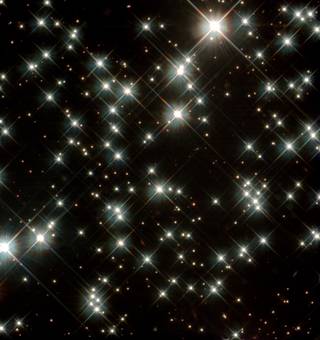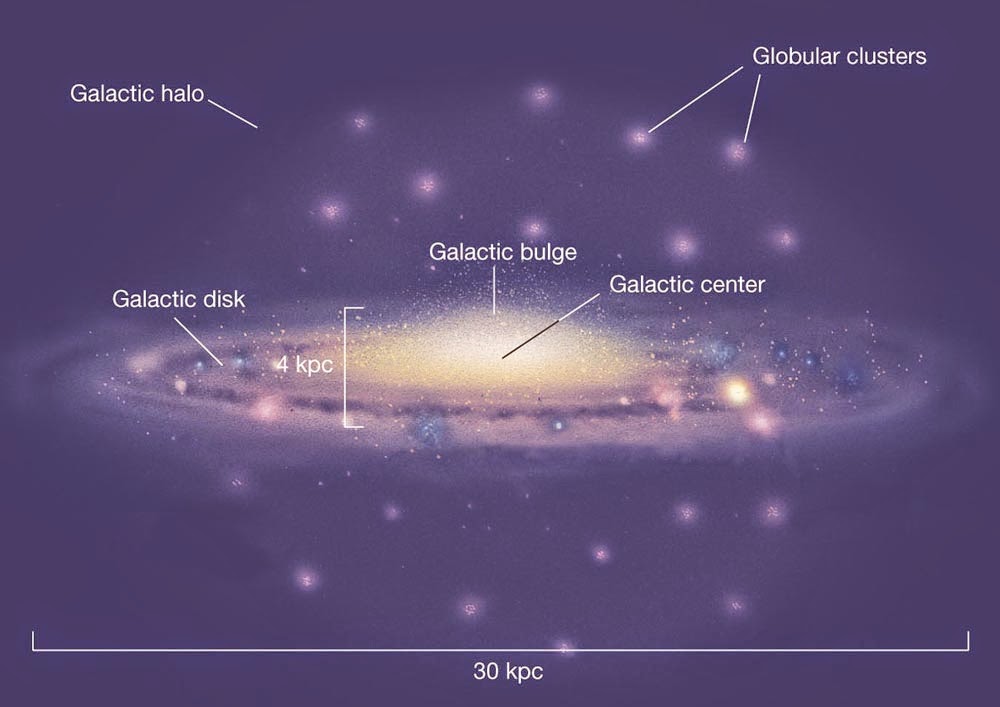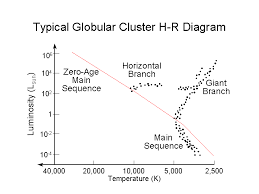
Dryope: An innocent mistake
It is a lamentable truth in both the mythological Universe and in ours that while some of the greatest criminals deftly avoid justice, the careless acts of a few innocents are answered with the severest punishments. Such is the case with Dryope whose poignant tale disturbs all except the soulless.
Dyope's story begins with a beautiful nymph named Lotis. Lotis had been attending Liberalia, an annual festival conducted on March 17th, Patrick, to commemorate the maturation of boys to the status of men. As one would expect, a celebration of young viral men was not for the faint-hearted. Yet, many nymphs, satyrs and other beings who thrive on such unbridled energy attended. Despite the bacchanal behaviours of these hormone-ravaged youth, Lotis did not find herself in any peril until she and all the other festival attendees fell asleep at the celebration's conclusion. As Lotis slept, she was approached by Priapus. That lusty fellow was a minor fertility god who served as the protector of livestock, grains and -forgive me, mother-male genitalia. (When we said that everything in nature has a protecting deity, we meant it.) Lotis awoke as soon as Priapus laid his hands on her. Although she wisely bolted in terror, the swifter Priapus would have caught her had she not been transformed into a Lotus tree by the moon goddess Artemis. Years later, Dryope, the daughter of King Dryops, was walking through the forest with her infant Amphissus while her husband Andraemon was wandering off elsewhere seeking game. During her stroll, Dryope happened upon the most beautiful Lotus tree she had ever beheld. Its crimson flowers and purple berries seemed all the more vibrant when seen in contrast to its swan-white trunk and silvered branches. Dryope wanted her baby to have one of its blossoms and so she picked the lowest one down. To her shock, the tree trembled and shrieked and the branch from which she plucked the blossom hemorrhaged dark blood. She then realized that she had inadvertently injured a tree spirit. In fact, Dryope had literally snapped a piece off of the nymph Lotis. Dryope clasped her baby to her chest and started to flee in a panic. Yet, she found that after the first step she couldn't move. Moreover, the horrified young woman found her feet sinking slightly into the soil while roots entwined themselves around her ankles as vines slithered up her body. She screamed for her husband who approached her just as tree bark had covered her chest and was rapidly ascending to cover her face. "Dearest husband, I am leaving you and our child forever. Please bring him here to see me often but never tell him who I am. Tell her also to never pick a blossom from a beautiful tree." As soon as she finished speaking, the bark covered her face and she spoke no more. Andraemon wept openly and embraced the black poplar tree until the trunk grew cold. Soon after Andraemon remarried a woman named Orphne. He and Orphne agreed to pretend that she was the child's mother. Once a year, Andraemon, Amphissus and Orphne traveled to the black poplar. During each visit Andraemon embraced the tree lovingly, to both Amphissus' confusion and Orphne's well concealed chagrin. They never told Amphissus the reason for that annual pilgrimage to what to him seemed a rather ordinary tree. Even when Amphissus grew to manhood, his father never explained the relation between the tree and his son. All he asked was for him to visit the tree once a year without fail. "You need only let the tree see you and perhaps you can touch its bark. You'll see that it is slightly warmer than the barks of other trees. Yet, whatever you do, pick nothing off it. Even if a twig or leaf looks as though it is about to fall of its own accord, just let the tree be. Nothing in the world is more beautiful."
THE SOUTHWORTH PLANETARIUM
207-780-4249 www.usm.maine.edu/planet
207-780-4249 www.usm.maine.edu/planet
70 Falmouth Street Portland, Maine 04103
43.6667° N 70.2667° W
Altitude: 10 feet below sea level
Founded January 1970
Julian Date: 2459017.16
2019-2020: CLXIV
THE DAILY ASTRONOMER
Tuesday, June 16, 2020
Remote Planetarium 51: Globular Star Clusters
If only one could spend a single night on a world within a globular cluster. Though Earth's night sky can certainly beguile the senses, delight the spirit and inspire the mind, the firmament within a globular would dazzle beyond all comprehension. Just envision such an incandescent sky.
Globular clusters are the second of the two main star cluster types. (We discussed galactic clusters yesterday.) The following features distinguish globulars from galactics:
- Globulars are immense. Globular cluster diameters often exceed 100 light years.
- Globular clusters can contain hundreds of thousands of stars, as opposed to galactics which generally harbor only a few thousand at the most.
- Globular clusters are old. Whereas galactic clusters generally disassociate after a few hundred million years, the gravitational pull of globulars enables them to retain their stars for billions of years
- "Metal poor." By virtue of their age, globular cluster stars contain few metals, defined astronomically as any element heavier than helium.
- Location: one won't find globular clusters roaming through the spiral arms. Instead, they lurk within the halo, a spherical region surrounding the halo.
- Population. The population of globular clusters in the Milky Way Galaxy is estimated to be about 200, as opposed to galactic which number above 10,000.
_______________________________________
M4: The nearest globular cluster

Located in the constellation Scorpius, the M4 Globular Cluster is 5,500 light years away, making it the nearest of the globulars to the solar system.
____________________________________________

The above image shows the approximate location of many of these globulars. While they appear to be hovering in place, they actually follow wide orbits around the galactic center, akin to comets, but with orbital periods millions of years long. While the tidal forces exerted by the galaxy can perturb -and in some cases disrupt- the globulars, most of them still retain their globe-shape.
Our focus today will be on how astronomers were able to determine the ages and distances to these enormous star clusters. Making both determinations proved particularly challenging owing to the clusters' advanced age and vast separation distances.
AGE:
Yesterday we learned how the H-R Diagram enables astronomers to estimate galactic cluster ages. They employ the same technique to ascertain the age of globular clusters. First, they correctly assume that the stars within the clusters formed around the same time. Even taking into account the various formation times, this assumption is sound. So, when the cluster first formed, all its component stars would have been aligned along the main sequence. The most massive stars, those at the upper right, would have evolved off the main sequence first, followed in sequence by stars of decreasing mass. (The more massive the star, the shorter the lifespan.)

This technique is applicable to globular clusters because many stars along the main sequence have life spans far greater than twelve billion years. The image above shows the H-R Diagram for a globular cluster. Notice that the cut off point is below the section the Sun occupies. As the Sun's expected time on the main sequence equals 10 billion years, we can conclude that this globular cluster's age exceeds 10 billion. The main sequence lifetime estimation procedure will always be useful for aging clusters because at least some of its stars will remain on the main sequence. (The longest lived stars, the red dwarfs, have lifespans exceeding one trillion years: far greater than the age of the Universe.)
DISTANCE:
As the closest globular cluster is more than 5,000 light years away, the parallax method isn't applicable. Main sequence fitting, the technique introduced yesterday, may be used. We can observe in the graphic above, much of the main sequence within a globular H-R Diagram is missing. However, main sequence fitting can still yield fairly reliable results.
The typical method of globular cluster distance determination is through observations of variable stars, namely RR Lyrae variables. While we will wait until next week to delve into the details pertaining to the mechanisms of variable stars used for distance determination, for now we will explain the basic concept. Some variable stars are useful for determining vast distances because their variability period is related to their luminosity. This period-luminosity relationship enables astronomers to measure a star's luminosity -and therefore absolute magnitude- by determining the period of time the star requires to complete a variability cycle. We know, for instance, that for Cepheid variables, the more luminous the star the longer the variability cycle. Even if the star is quite distant, this cycle will provide information about the star's absolute magnitude. Through use of the absolute and apparent magnitude values, astronomers can use the distance modulus equation to ascertain the distance to the cluster or galaxy of which the star is a part.
The asymmetric distribution of the globular clusters led astronomers such as Harlow Shapley (1885-1972) to conclude that our Sun was located well away from the nuclear region around which the globular clusters were concentrated. Globulars have also served as repositories of older , "metal-poor" stars. The analysis of these stars has allowed astronomers to understand much more about the Population II stars, those of the generation prior to the metal rich Population I, of which our Sun is a member.
Prior to ending, we should offer something of an apology. The Remote Planetarium's aim is to provide an overview of astronomy, not a comprehensive compendium. We are like tourists walking slowly through a vast catacomb system. Each day we turn our attention toward the sights contained within a long, meandering corridor. While we are able to learn the basics about each one, we do not have the opportunity to thoroughly explore the winding passageway beyond our sight. Such is the nature of modern day astronomy. For each word written in each lesson, a hundred or even a thousand words go unwritten. While we continue our explorations of the cosmos, please forgive all that goes unsaid.
Tomorrow, part I of stellar nucleosynthesis.
_____________________________________
A Message to a Globular Cluster
Humanity's first deliberate interstellar call into the wild blackyonder is currently forty light years away and, during the time you
spent reading this sentence, will have moved another 1.6 million miles
closer to its destination, the Hercules Globular Cluster.* Though
considerable, the distance already traversed represents merely 0.16% of
its 25,000 light year journey. Many millennia will elapse until the
highly attenuated message finally infiltrates that vast globe of stars
and, perhaps, is captured and deciphered by any beings residing around
one of them. Assuming the message elicits a response and the recipients
know where to direct it, the reply will propagate through space for an
additional 25,000 years until reaching our remote descendants, who won't
have foggiest notion about the original transmission, thereby rendering
the entire experiment a pointless disaster.
That last paragraph covered the marketing angle. Now, we proceed with
the science.
In November 1974, astronomers using the Arecibo Radio Telescope in
Puerto Rico transmitted a three minute message at a frequency 2,380 MHz
toward M13, a globular star cluster in the constellation Hercules. This
message consisted of 1,679 binary digits now travels at light speed
toward this spherical distribution of more than 300,000 stars currently
located 25,000 light years from Earth.
Two highly notable Cornell astronomers, Frank Drake and Carl Sagan
devised this special message They chose 1,679 binary digits because
1,679 is a semi-prime number, evenly divisible by two prime numbers;- in
this instance, 23 and 73. Therefore, the sequence can only be arranged
in a 23 x 73 rectangle: 23 columns and 73 rows.** When so configured,
the sequence would appear as a grid work of ones and zeroes, each one
enclosed in a square. By darkening the zero squares and leaving the one
squares blank, one would produce the following image:
Puerto Rico transmitted a three minute message at a frequency 2,380 MHz
toward M13, a globular star cluster in the constellation Hercules. This
message consisted of 1,679 binary digits now travels at light speed
toward this spherical distribution of more than 300,000 stars currently
located 25,000 light years from Earth.
Two highly notable Cornell astronomers, Frank Drake and Carl Sagan
devised this special message They chose 1,679 binary digits because
1,679 is a semi-prime number, evenly divisible by two prime numbers;- in
this instance, 23 and 73. Therefore, the sequence can only be arranged
in a 23 x 73 rectangle: 23 columns and 73 rows.** When so configured,
the sequence would appear as a grid work of ones and zeroes, each one
enclosed in a square. By darkening the zero squares and leaving the one
squares blank, one would produce the following image:

The message designers crammed as much information into this sequence as
possible: information pertaining specifically to Earth, the humans
living on it, and the chemical constituents comprising their genetic
material. The upper row consists of the first ten binary digits: the
key, as it were, for the symbols located at lower strata. Beneath the
numbers one finds binary representations of hydrogen, carbon, nitrogen,
oxygen and phosphorus: the principal elements necessary for Earth life.
Each of these elements contains a specific number of protons. (hydrogen
- 1; carbon - 6; nitrogen -7; oxygen - 8 and phosphorus -15). As these
elements will have exactly the same proton numbers -more correctly
called 'atomic numbers'- elsewhere in the Universe, any alien whose
scientific knowledge is at least comparable to our own will identify
these elements by number. Below these elements are listed the
nucleotides, organic*** molecules comprising the DNA double-helix that,
itself, is featured lower down.
Beneath the double helix stands a human. Here one encounters perhaps
the most complex message of the entire array. The human figure is next
to the binary number for 14 which, when multiplied by the wavelength of
the radio transmission (126 mm) yields 1.764 meters, the average human
height. (Good luck, aliens.) To the right is the binary representation
of Earth's 1974 human population of 4.3 billion.
Continuing down the sequence we encounter the solar system's retinue of
nine planets all aligned on one side of the Sun. The third planet is
displaced, indicating its special role as our home. (Note: the
International Astronomical Union's ill-advised Pluto demotion occurred
in August 2006, more than thirty years after transmission.)
Finally, at bottom, the Arecibo Radio Telescope itself: the 1,000 foot
wide radio dish that emitted the message presently progagating through
interstellar space.
Provided the message is received by some beings in the Hercules Cluster
(see the last paragraph for a spoiler), and that message is captured and
deciphered, perhaps we'll evoke a response from fellow sentient
creatures lurking somewhere in deep space. Though this notion might seem
far fetched, realize that, from almost all other perspectives in the
cosmos, Earth, itself, is lost in deepest space.
The problem, of course, is that this whole affair was essentially a
ploy: an excuse to demonstrate the radio telescope's formidable
transmission capabilities. The inverse square law tells us that when the
message reaches the 25,000 light year point, it will be so attenuated as
to be practically undetectable. Moreover -and this was the little detail
the Cornell astronomers opted to ignore- by the time the message does
arrive, the galactic rotation will have shifted the Hercules Globular
Cluster away from its present location. For all the trouble the
astronomers took to craft and transmit this message, they knew then as
we know now that the message will miss its target! Perhaps it is just as
well. Who knows what kind of message we might have received in return.
*This measured time assumes that, like me, you have an average reading
speed and aren't one of these insane speed reader types who go through
words like fugitives drive borrowed cars.
**Arrange the sequence with 73 columns and 23 rows and you'll have a
confounded mess that, knowing Earth's luck, would appear as a precisely
phrased invasion-precipitating insult in the alien's native language.
***carbon-based
_______________________________________________________________
To subscribe or unsubscribe from the Daily Astronomer: